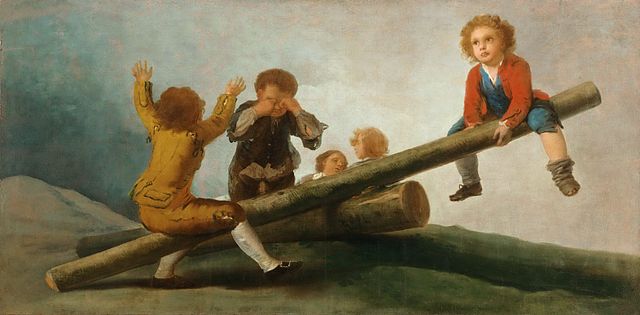A seesaw is a long, narrow board supported by a single pivot point, most commonly located at the midpoint between both ends; as one end goes up, the other goes down. These are most commonly found at parks and school playgrounds.
Seesaw in 1792 painting by Francisco de Goya
A set of conjoined playground seesaws
Fragment of an Attic red-figure krater by the Leningrad Painter dating between c. 470 and c. 460 BCE, currently held in the Museum of Fine Arts, depicting two adolescent girls playing on a see-saw
Seesaws are manufactured in creative shapes, designs and a range of fun bright colours to appear attractive to a child.
A lever is a simple machine consisting of a beam or rigid rod pivoted at a fixed hinge, or fulcrum. A lever is a rigid body capable of rotating on a point on itself. On the basis of the locations of fulcrum, load and effort, the lever is divided into three types. It is one of the six simple machines identified by Renaissance scientists. A lever amplifies an input force to provide a greater output force, which is said to provide leverage, which is mechanical advantage gained in the system, equal to the ratio of the output force to the input force. As such, the lever is a mechanical advantage device, trading off force against movement.
Levers can be used to exert a large force over a small distance at one end by exerting only a small force (effort) over a greater distance at the other.
Archimedes lever, Engraving from Mechanics Magazine, published in London in 1824
Simple lever, fulcrum and vertical posts







